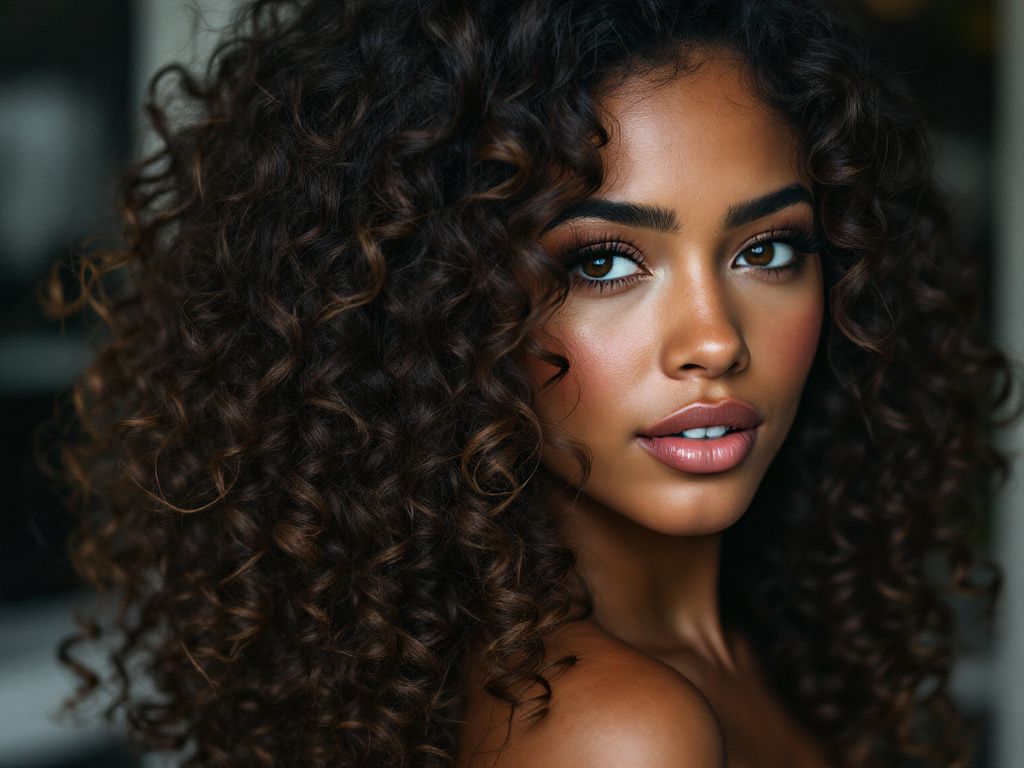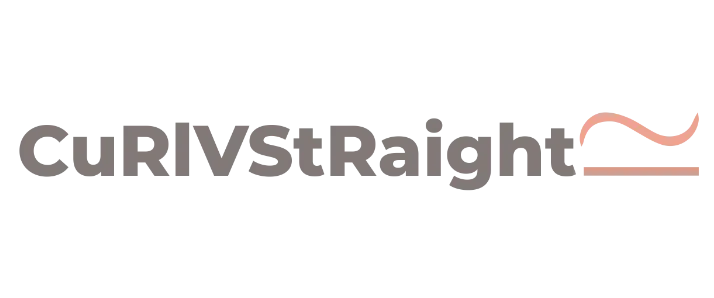
When it comes to cutting curly hair, artists and engineers converge in a symphony of shapes and angles. Each snip and shear can alter the final look drastically, making professional hair techniques an invaluable asset to stylists who want to achieve distinct and desirable haircuts. Imagine the masterpiece that lies within each curl, waiting patiently for a sculptor’s touch. Welcome to “Curl Cuts Decoded”, your comprehensive guide to unraveling the geometry of the best textured haircuts. Ready to elevate your salon methods to the professional echelon? Let’s dive in!
The Art and Science of Cutting Curly Hair
Understanding the Fundamentals: Hair Biology and Curl Types
Before wielding scissors, a deep understanding of hair biology is crucial. The hair shaft’s structure, encompassing the medulla, cortex, and cuticle, defines how hair looks and behaves. Curly hair results from asymmetrical follicle shapes—flattened or oval follicles produce waves, curls, or coils.
Curl Classification: The Blueprint
Understanding the curl classification system, ranging from Type 2 (wavy) to Type 4 (coily), is foundational for professional hair techniques. Here’s a breakdown with industry standard insights:
- Type 2 (Wavy Hair): S-shaped waves. Subset includes 2A (loose), 2B (medium), and 2C (thick, resistant).
- Type 3 (Curly Hair): Spiral curls. Subtypes include 3A (loose curls), 3B (springy curls), and 3C (tight curls).
- Type 4 (Coily Hair): Soft or wiry curls. Subdivides into 4A (soft coils), 4B (Z-pattern), and 4C (tightest Z-pattern).
The curl type dictates not only cutting techniques but also salon methods for styling and maintenance. 🎨

Geometry in Haircutting: The Architectural Approach
The Role of Angles and Shapes
In geometry, an understanding of angles and shapes leads to mastery. Similarly, cutting curly hair involves recognizing natural fall and growth patterns whilst applying systematic techniques.
**Circular or Curvilinear Architecture**: Ideal for enhancing curl fullness. By cutting into the curl pattern at consistent, harmonious intervals, stylists create rounded, voluminous silhouettes, essential for curly textures to retain a controlled chaos.
**Angular Geometry**: Contrasts that flatter. Applying selenium-derived gradations can frame faces or highlight key facial features. Angular cuts can provide shape dynamics while maintaining control over bulk.
Technical Walkthrough of Cut Techniques
- Deconstructive Layering: Key for curls needing volume without bulk. Start by visually dividing the hair into quadrants, assess curl springs, and employ strategically weighted cuts. Cut within the curls’ mid-pattern to avoid springback effects post drying. For best results, use either a texturizing shear or point cutting within a 45-degree downward angle.
- Ribbons and Spirals: Execute by twisting sections of hair into loose coils. Anchor the twist before trimming the ends at a parallel or perpendicular axis to realize a naturally enhanced curl flow. This method marries aesthetic flair with mathematical precision, condensing bulk while augmenting movement.
Real-world Applications: A European Salon Case Study
Salon Sylvian in Paris adopted Deconstructive Layering and noted a 30% increase in styling satisfaction among clients with Type 3 hair. Their studies demonstrated the expansive capabilities of structured, angular cuts, highlighting the diplomatic harmony between curly chaos and order.
Industry Standards and Tools: Zeroing in on Professional Hair Techniques

Optimal Tool Selection
A stylists’ arsenal influences outcomes.
- Curved and Angular Shears: Provide anti-fatigue handling while maximizing on multi-directional cutting efficiencies.
- Precision Razors: Essential for soft texturizing and shaping edges, emphasizing seamless transitions.
- Digital Scissors: Enabled for precision, they can track and recall successively optimal geometries through embedded sensory technologies.
Compliance with Industry Standards
Following best practices established by the Professional Beauty Association (PBA):
- Maintain 15-degree blade pitch for general cuts.
- Employ a 30-degree blade close for taper work, minimizing unwanted frizz.
Insider Tips and Techniques from Renowned Stylists
Harnessing Stylist Secrets for Engineered Fabrication 📐
Tips from Jonathan Morales, a curly-hair expert:

- Tension Variance: Consistently monitor and adapt hand-tosion tension to prevent elongation discrepancies between sections.
- Hydration Precision: While damp hair aids glide, visibly inspecting dry curls ensures you never incise shortcuts you can’t see.
- Environmental Context: Elevation and relative humidity affect curl potential. Weather simulations showcased highly humid or urban environments can exaggerate curl tightness post-cut; adjust your cuts and promises to account for climate variances.
Case Study: Insights from “Curls Inc.” in New York City
Peering into the methods of “Curls Inc.”, we find an establishment that garners trust and allegiance through innovation. Their ethos? Syzygy between cut technology and environmental sustainability—with stylists routinely executing eco-friendly methods like water-saving and natural oil infusions, proving that modern curls can acquaintancesly embrace tradition and tumult alike.
Striving for Perfection: Continuous Learning and Trends
As the capricious nature of fashion continues to evolve, so must your professional methods. **Develop a cadence to probe emerging techniques** found in digital platforms or international competitions. Offer clients the future through acquired, authenticated, and evolving knowledge.
Synthesis of Historical Standards and the Present
Data cited from the annual American Beauty Association convention illustrate a 75% rise in client-desired textured and natural styles. Rounding out your traditional hair techniques with cutting-edge education, adaptive problem-solving, and impelling creativity will see you transcending linear salon methods.
Conclusion: Embrace the Mastery of Curl Geometry
By understanding that curly haircuts encapsulate elegance and equity of motion, stylists can bridge artistic thought with geometric precision. As you approximate the delicate contours of curls—theireminence awaits, sculpted masterfully through deliberate dexterity and insight.
In equipping yourself with the vocabulary of architected cuts, know you’re endowing your craft with infinity and an immutable grace. You don’t just shape curls; you shape an identity. So, embark on your textured voyage armed with purpose and perspective. Never have the curves been so alluring, nor the cuts so refined and resolute. 🌟
Frequently Asked Questions
What are the benefits of using a hair mask in my hair care routine?
Using a hair mask can provide several benefits, including hydration, smoothing, strengthening, curl definition, heat protection, and damage repair. Hair masks infuse the hair with moisture, help coat the hair shaft to seal split ends, reduce breakage, and protect the hair from heat styling and environmental damage[1][4].
What ingredients should I look for in a hair mask?
Effective hair masks often include ingredients such as coconut oil, argan oil, shea butter, honey, avocado oil, green tea, and coconut water. These ingredients provide nourishment, moisturize, and protect the hair, offering benefits like softening, moisturizing, and protecting against damage[2][5].
How often should I use a hair mask in my routine?
You should use a hair mask whenever your hair feels dry, unmanageable, or in need of intense hydration. This can vary depending on your hair type and needs, but generally, using a hair mask once or twice a week can help maintain healthy and moisturized hair[1][4].
How do I apply a hair mask for the best results?
To apply a hair mask effectively, shampoo your hair first, then apply the mask, focusing especially on the ends where hair tends to be the most damaged. Leave the mask on for anywhere from 10 minutes to overnight, depending on the type of mask and your hair’s needs[1][4].
References


Leave a Reply